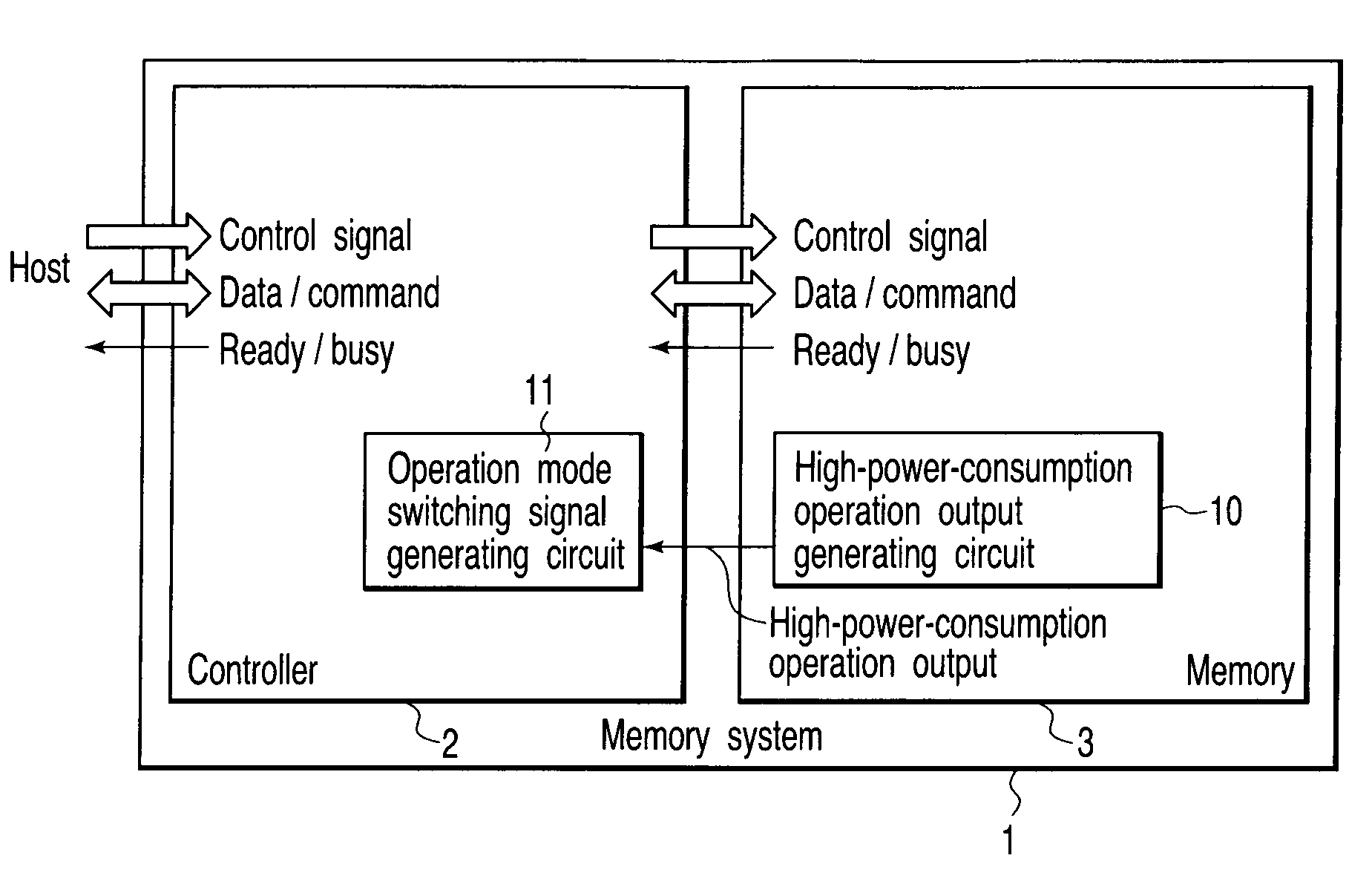Memory system and memory chip
a memory system and memory chip technology, applied in the field of memory, can solve the problems of inability to recognize the power consumption of the memory, the power consumption of the controller also varies between operations, and the power consumption of the sequence which is executed
- Summary
- Abstract
- Description
- Claims
- Application Information
AI Technical Summary
Benefits of technology
Problems solved by technology
Method used
Image
Examples
first embodiment
[0032]FIG. 1 is a block diagram showing a basic structure of a memory system according to a first embodiment of the present invention.
[0033]As shown in FIG. 1, a memory system 1 according to the first embodiment includes a controller 2 and a memory 3 which is controlled by the controller 2. An example of the memory 3 is a nonvolatile semiconductor memory. An example of the nonvolatile semiconductor memory is a flash memory. An example of the flash memory is a NAND flash memory. A specific example of the memory system 1 is a memory card. The memory card is used as a recording medium for, for instance, a digital camera, a mobile phone and a portable music player.
[0034]The memory 3 in this embodiment receives a control signal, write data and a command from the controller 2. The memory 3 outputs read data and ready / busy output (RY / BY) to the controller 2. Examples of the control signal are a chip enable / CE (“ / ” indicates a negative logic), a write enable / WE, a read enable / RE, a comma...
second embodiment
[0081]A second embodiment is an example relating to an output method of the high-power-consumption operation output.
[0082]FIG. 9 is a circuit diagram showing a first example of a memory system according to the second embodiment of the invention.
[0083]As shown in FIG. 9, the memory system 1 includes a high-power-consumption operation output line which transmits the high-power-consumption operation output from the memory 3 to the controller 2.
[0084]The memory 3 shown in FIG. 9 drives the high-power-consumption operation output line when the high-power-consumption operation output is asserted, and sets the power-consumption operation output line at a high impedance when the high-power-consumption operation output is negated, or vice versa. FIG. 9 shows the former by way of example.
[0085]Specifically, the output of the high-power-consumption operation output generating circuit 10 is supplied to the gate of an N-channel insulated-gate FET 30. The FET 30 drives the high-power-consumption ...
third embodiment
[0098]FIG. 14 is a block diagram showing an example of a memory system according to a third embodiment of the invention.
[0099]As shown in FIG. 14, in the third embodiment, the level of the high-power-consumption operation can be selectively set in the memory 3 by an instruction from the controller 2. Specifically, the level of the power consumption value for distinguishing “assert” and “negate” of the high-power-consumption operation output is set from the outside. The set level of the power consumption value is stored in a power consumption boundary setting register 50 of the memory 3. A sequence state discrimination circuit 51 discriminates the sequence state, and detects or estimates the value of the power consumption of the memory 3. The level, which is stored in the power consumption boundary setting register 50, is supplied to the sequence state discrimination circuit 51. The sequence state discrimination circuit 51, for example, compares the supplied level and the detected or...
PUM
 Login to View More
Login to View More Abstract
Description
Claims
Application Information
 Login to View More
Login to View More - R&D
- Intellectual Property
- Life Sciences
- Materials
- Tech Scout
- Unparalleled Data Quality
- Higher Quality Content
- 60% Fewer Hallucinations
Browse by: Latest US Patents, China's latest patents, Technical Efficacy Thesaurus, Application Domain, Technology Topic, Popular Technical Reports.
© 2025 PatSnap. All rights reserved.Legal|Privacy policy|Modern Slavery Act Transparency Statement|Sitemap|About US| Contact US: help@patsnap.com



